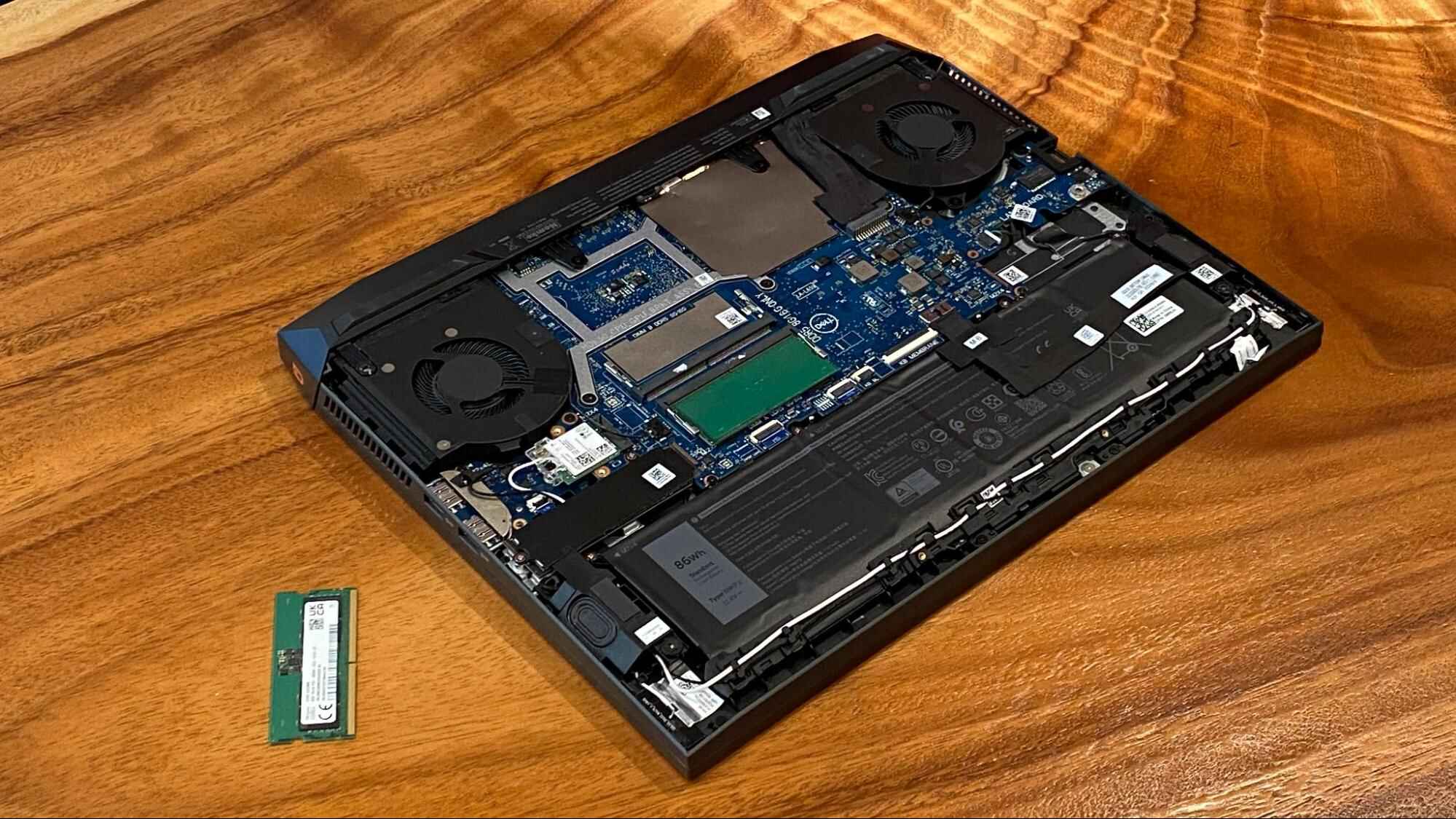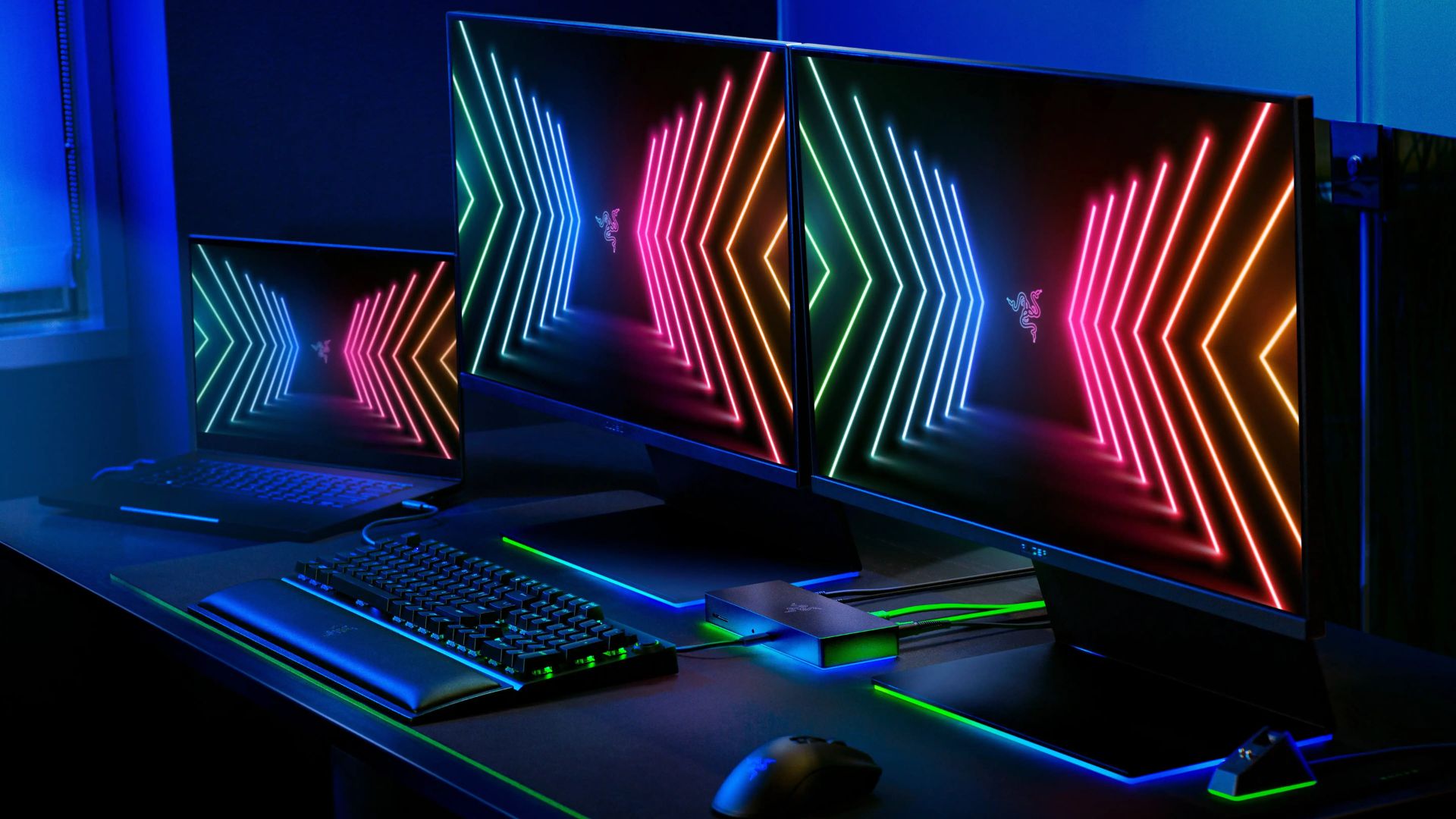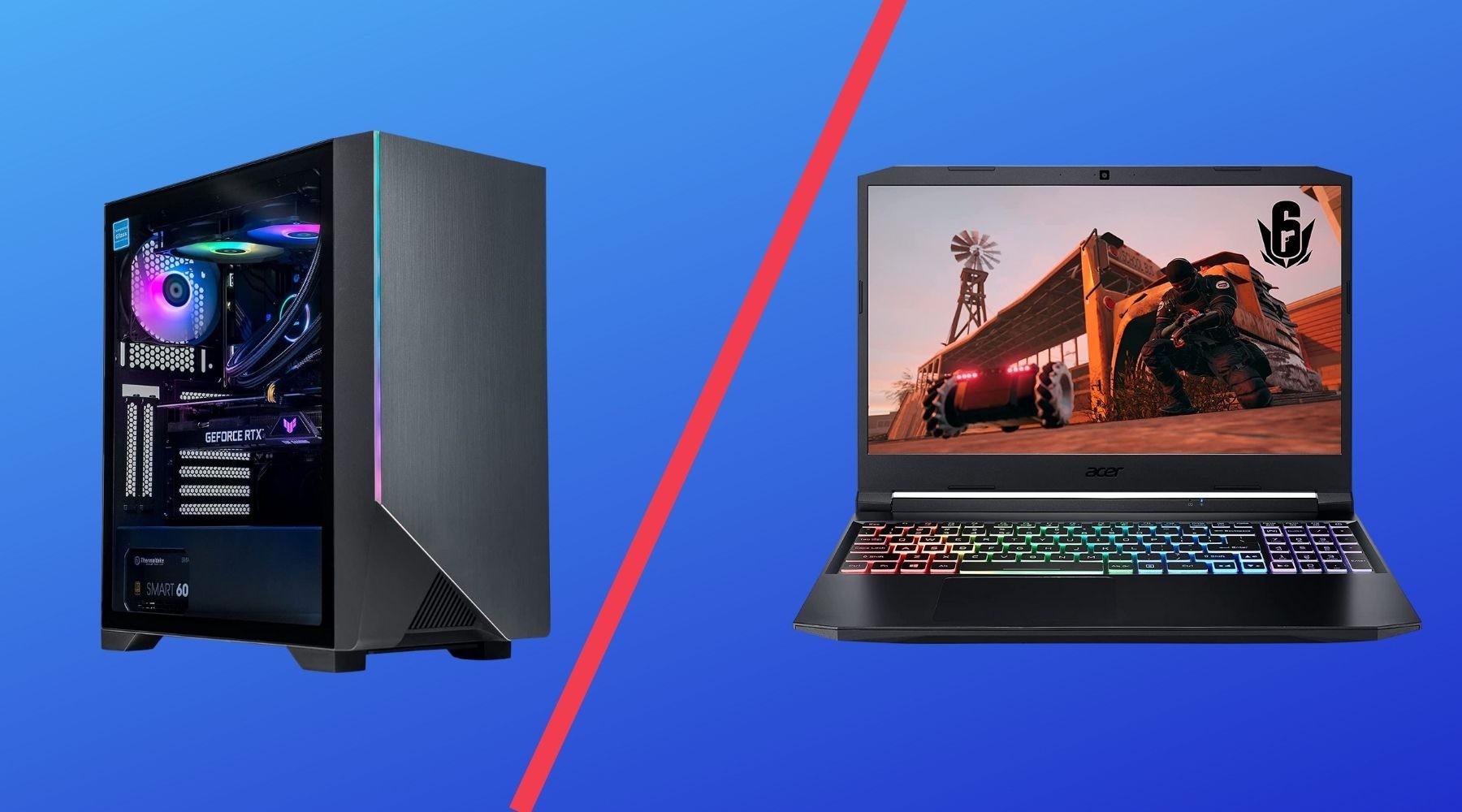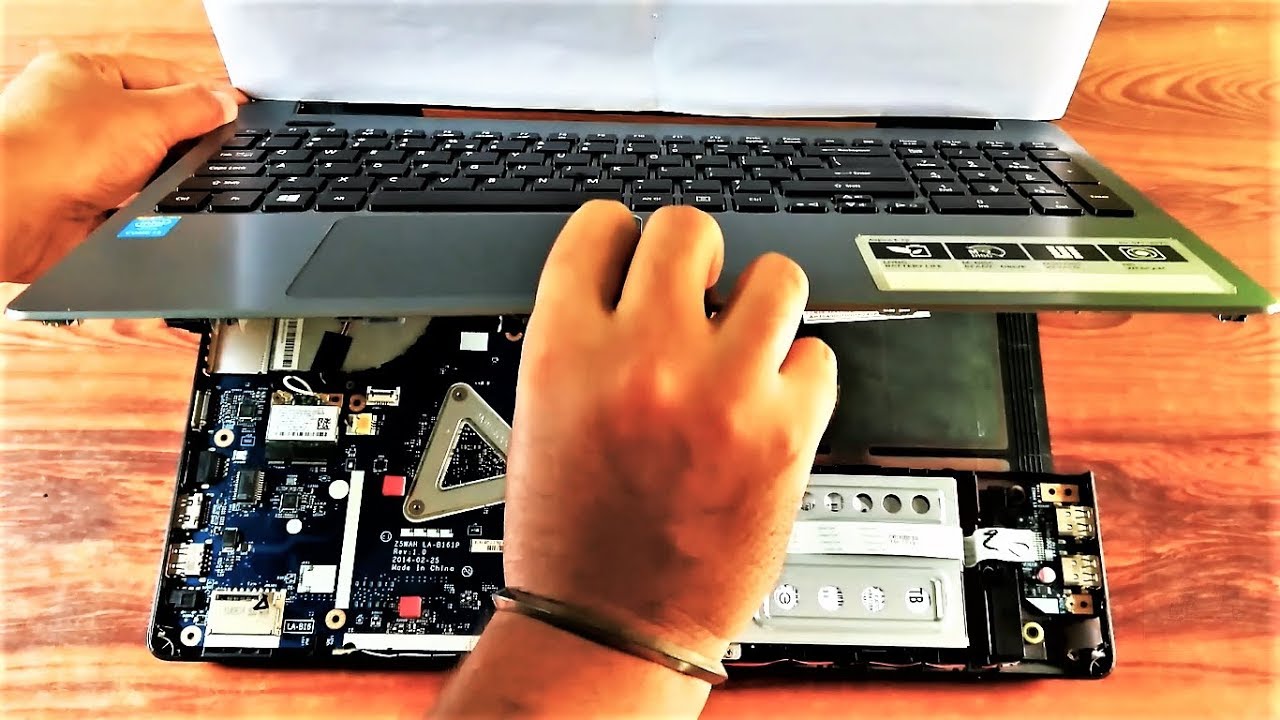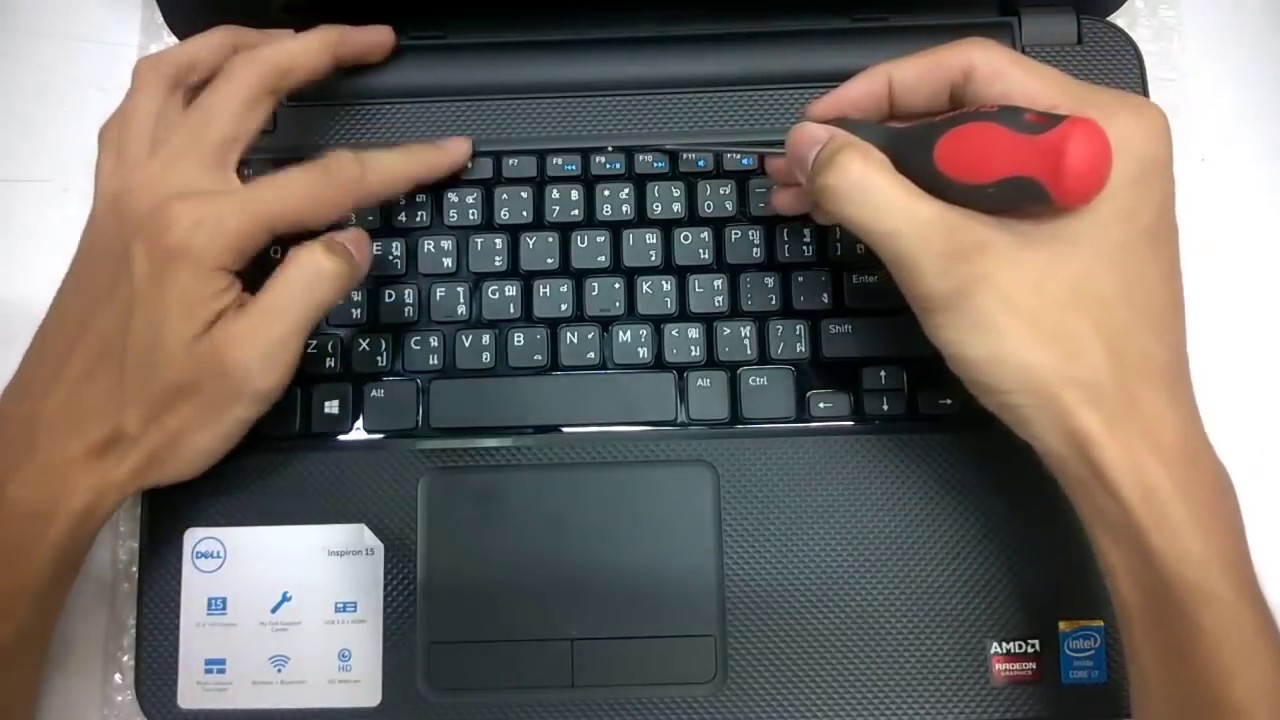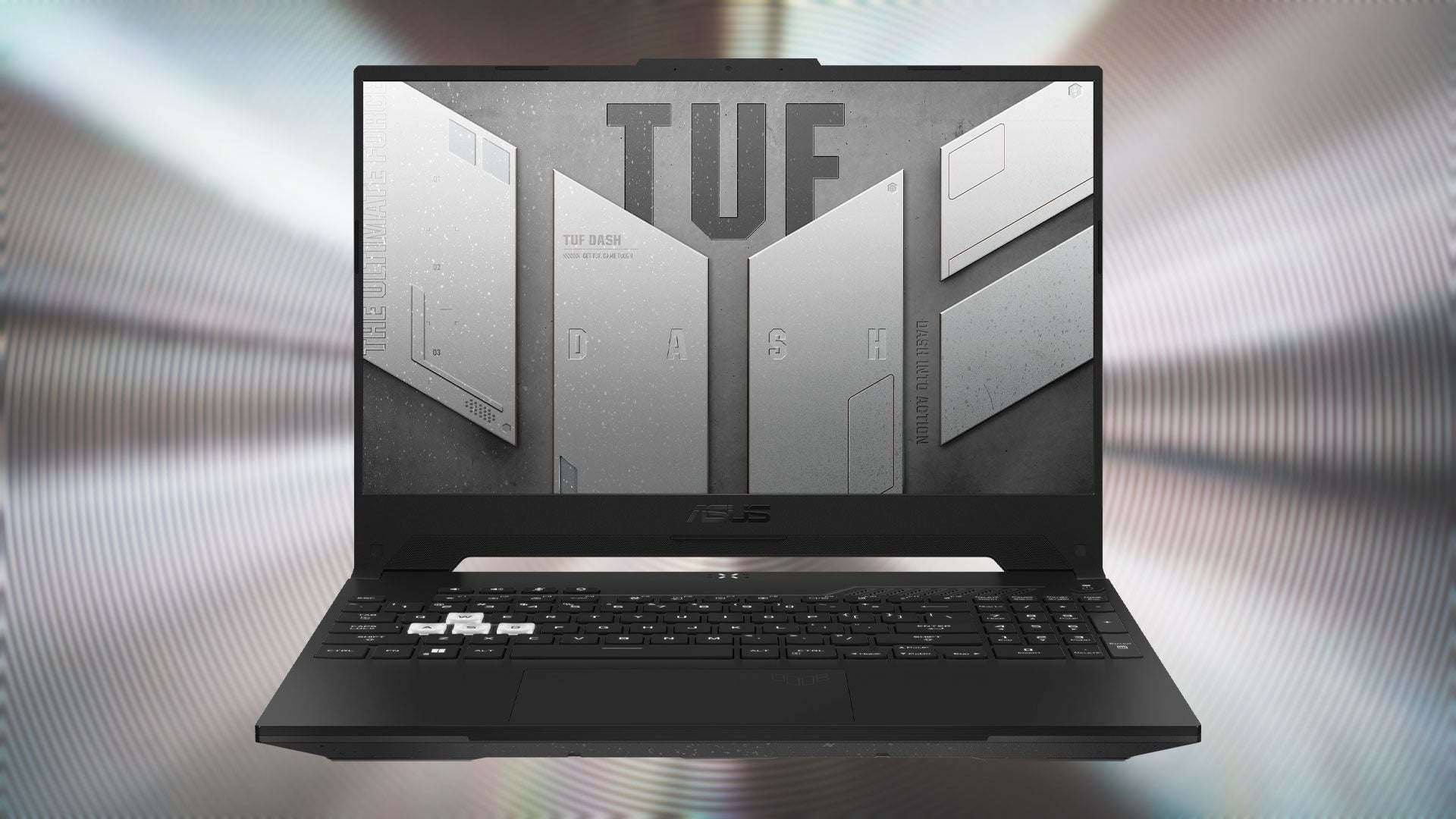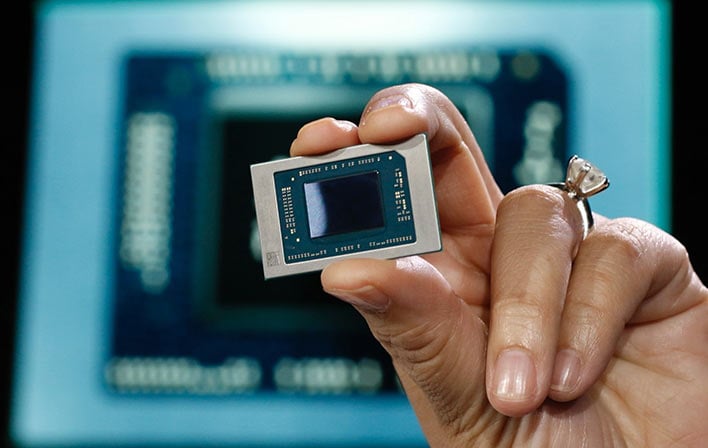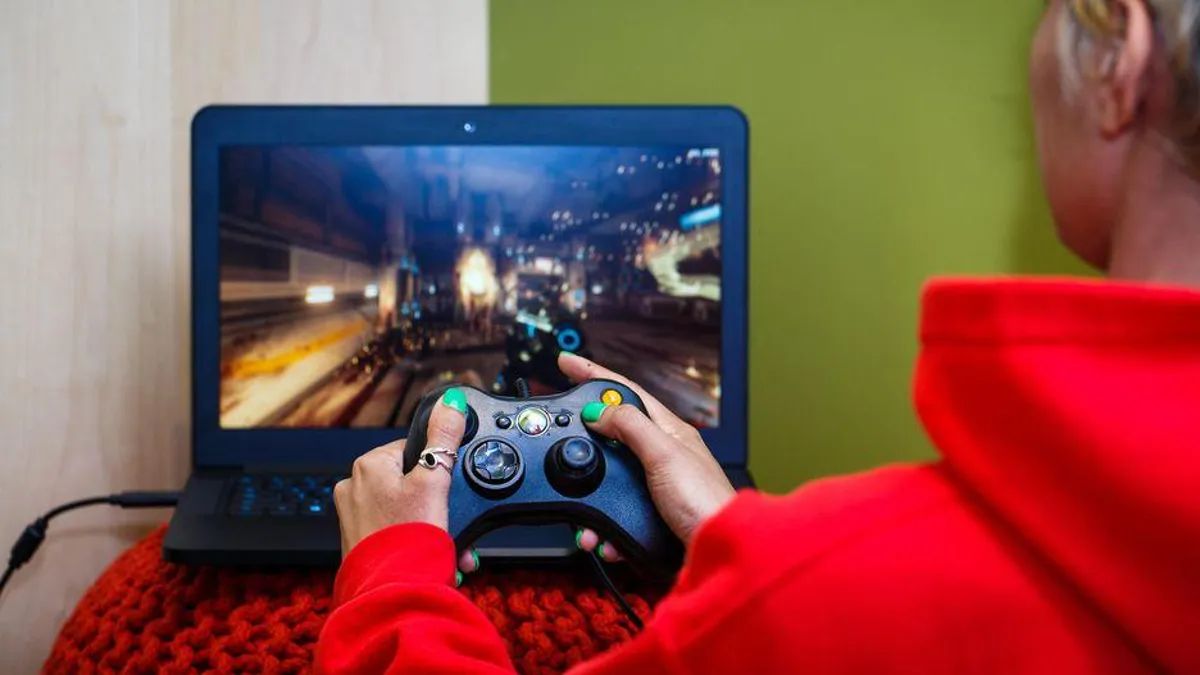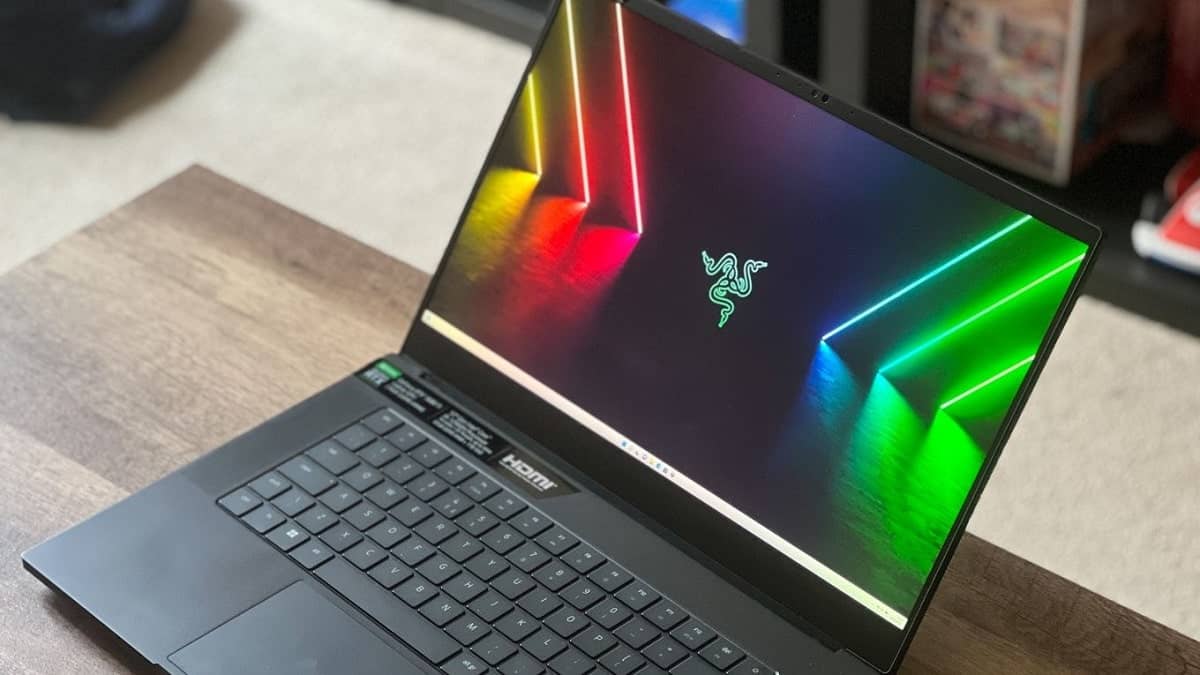Introduction
Gaming laptops have come a long way over the years, offering incredible graphics, fast processing speeds, and immersive gaming experiences. However, as technology continues to advance, it’s only natural that you may start to feel the limitations of your current gaming laptop. Thankfully, there are several upgrades you can make to enhance its performance and keep up with the latest games.
Whether you’re a casual gamer or a dedicated esports enthusiast, upgrading your gaming laptop can breathe new life into your gaming sessions. From boosting processing power to improving graphics and overall system performance, each upgrade has the potential to take your gaming experience to the next level.
In this article, we will explore some of the most effective upgrades you can consider for your gaming laptop. From battery upgrades to graphics card improvements, we will cover the options that can significantly enhance your gaming performance.
Keep in mind that not all laptops are created equal, and not all upgrades are possible on every model. Before making any upgrades, it’s important to check your laptop’s compatibility and consult the manufacturer’s guidelines. Additionally, you may want to consider seeking professional assistance or guidance if you’re not confident in performing the upgrades yourself.
So, without further ado, let’s dive into the world of gaming laptop upgrades and discover how you can unlock the full potential of your gaming rig.
Battery Upgrade
One of the common frustrations with gaming laptops is their limited battery life. While gaming requires a significant amount of power, it’s not uncommon for a laptop’s battery to drain quickly during intense gaming sessions. If you find yourself constantly tethered to a power outlet, a battery upgrade could be the solution.
Upgrading your gaming laptop’s battery can provide you with longer gaming sessions without having to worry about constantly plugging in. Modern gaming laptop batteries offer improved capacity, allowing you to enjoy uninterrupted gameplay for extended periods. Look for high-capacity batteries that are compatible with your laptop model.
In addition to longer battery life, some upgraded batteries feature fast charging technology, enabling you to quickly recharge your laptop when necessary. This can be especially useful during times when you need to get back into the game quickly or when you are on the go and don’t have access to a power outlet for an extended period.
When selecting a battery, consider factors such as capacity, voltage, wattage, and compatibility with your laptop’s power requirements. It’s also crucial to purchase batteries from reputable manufacturers to ensure safety and reliability. If you’re unsure about the process, consult a professional or follow the manufacturer’s guidelines to ensure a proper installation.
Lastly, it’s worth mentioning that while a battery upgrade can enhance your gaming laptop’s performance in terms of battery life, it won’t improve the overall gaming experience in terms of graphics or processing power. It is just one piece of the puzzle when it comes to upgrading your gaming laptop.
With a new battery, you can have peace of mind and enjoy longer gaming sessions without the constant need to find a power outlet. So, if you’re tired of the limited battery life on your gaming laptop, consider upgrading the battery for a more seamless gaming experience.
Upgrading RAM
When it comes to gaming performance, your laptop’s RAM plays a crucial role. RAM, or Random Access Memory, is responsible for storing and accessing data quickly, allowing your laptop to run multiple programs simultaneously. Upgrading your RAM can significantly improve your gaming experience by providing smoother gameplay, faster loading times, and better overall system performance.
If you often find your gaming laptop struggling to handle demanding games or experience lag, upgrading your RAM can help alleviate these issues. More RAM allows your laptop to store and access a larger amount of data, preventing bottlenecks and ensuring that your games run smoothly.
Before upgrading your RAM, it’s essential to check your laptop’s specifications and determine the maximum amount of RAM it can support. Additionally, identify the type and speed of RAM compatible with your laptop model. Remember, not all laptops have upgradable RAM, so it’s crucial to do your research beforehand.
Once you have the necessary information, purchasing and installing additional RAM is relatively straightforward. Many laptops have easily accessible RAM slots, making it a simple process of removing the existing RAM modules and inserting the new ones. However, some laptops may require more intricate disassembly, so it’s advisable to consult the manufacturer’s guidelines or seek professional assistance if you’re unsure.
When selecting RAM modules, consider opting for higher capacity and faster speeds for maximum performance. Investing in quality RAM from reputable brands will ensure compatibility and reliability. It’s also worth noting that adding more RAM won’t directly improve graphics performance but will help your laptop handle graphics-intensive games more efficiently.
Upgrading your laptop’s RAM can significantly enhance your gaming experience by providing a smoother and more responsive system. With more RAM at your disposal, you can run games and additional programs simultaneously without detrimental effects on performance. So, if you’re looking to elevate your gaming performance, a RAM upgrade is a worthwhile investment.
Solid State Drive (SSD) Upgrade
One of the most impactful upgrades you can make to your gaming laptop is replacing the traditional hard disk drive (HDD) with a solid-state drive (SSD). Unlike HDDs, SSDs have no moving parts, resulting in faster data access, quicker boot times, and improved overall system performance.
An SSD upgrade can significantly enhance your gaming experience by reducing loading times, allowing games to launch more quickly, and providing smoother gameplay. With faster read and write speeds, your laptop can retrieve and save game data at a much faster rate, resulting in reduced lag and improved responsiveness.
When it comes to selecting an SSD for your gaming laptop, there are a few important factors to consider. The capacity of the SSD should be large enough to accommodate your operating system, games, and other essential files. Fortunately, SSDs with larger capacities have become more affordable over time.
In addition to capacity, pay attention to the interface and form factor of the SSD to ensure compatibility with your laptop. Common interfaces include SATA, PCIe, and M.2, while form factors may vary depending on your laptop’s design.
It’s worth noting that most gaming laptops have space for both an HDD and an SSD, allowing you to keep your existing storage drive for larger files and game libraries while using the SSD as the primary system drive. This combination provides the benefit of ample storage space and the performance boost of an SSD.
Once you’ve selected the right SSD for your gaming laptop, the installation process involves transferring your existing data to the new drive. You can choose to clone your existing HDD to the SSD, ensuring that all your files, settings, and games are preserved. Alternatively, perform a fresh installation of your operating system and games on the new SSD for a clean start.
Overall, upgrading your gaming laptop’s hard drive to an SSD is a highly effective way to improve system performance and enhance your gaming experience. With faster data access and reduced loading times, your games will run more smoothly, allowing you to fully immerse yourself in the virtual world. So, if you’re looking for a game-changing upgrade, consider investing in an SSD for your gaming laptop.
Graphics Card Upgrade
The graphics card is a crucial component for gaming laptops, as it determines the visual quality and performance of your games. If you find your gaming laptop struggling to run the latest games at desirable settings or experiencing a lackluster gaming experience overall, upgrading the graphics card can make a significant difference.
Upgrading your graphics card can unlock the full potential of your gaming laptop, allowing you to enjoy higher frame rates, better graphical details, and smoother gameplay. The new generation of graphics cards often offers improved performance and efficiency compared to older models, providing a substantial boost to your gaming experience.
Before purchasing a new graphics card, consider the compatibility of your laptop’s motherboard and power supply. It’s crucial to ensure that the new graphics card is physically compatible and that your laptop can supply sufficient power to handle the upgraded graphics card’s requirements. Consult the laptop manufacturer’s documentation and check for any specific recommendations or restrictions.
Once you’ve determined compatibility, research and select a graphics card that best suits your gaming needs and budget. Look for cards with higher VRAM (Video Random Access Memory) capacity, as this directly impacts the ability to handle demanding games and textures. Additionally, consider features such as real-time ray tracing, which can greatly enhance visual quality in supported games.
The installation process for a new graphics card varies depending on the laptop model. In some laptops, the graphics card may be soldered onto the motherboard, making it non-upgradable. If your laptop does have an upgradable graphics card, it may require disassembling the laptop and carefully swapping out the old card for the new one. It’s important to follow proper procedures and possibly seek professional assistance to avoid any potential damage.
Upgrading your graphics card can be a significant investment, but it can also provide a substantial boost in gaming performance and visual quality. With an improved graphics card, you can enjoy the latest games with higher settings and smoother gameplay, immersing yourself in stunning and realistic graphics.
Remember that a graphics card upgrade is just one aspect of improving your gaming laptop’s performance. It’s essential to balance your system’s components to achieve optimal performance. Nevertheless, if you’re looking to take your gaming experience to new heights, upgrading your graphics card is a logical and impactful step to consider.
CPU Upgrade
The Central Processing Unit (CPU) is the brain of your gaming laptop, responsible for executing instructions and carrying out computations. If you notice your laptop struggling to handle demanding games or experiencing performance bottlenecks, upgrading the CPU can help unleash its full potential and improve overall gaming performance.
Before considering a CPU upgrade, it’s essential to check your laptop’s motherboard compatibility and ensure that it supports CPU upgrades. Some laptops have soldered CPUs that cannot be replaced, so it’s crucial to research your laptop model and consult the manufacturer’s guidelines.
If your laptop does support CPU upgrades, you can look for a newer and more powerful processor that is compatible with your motherboard socket type. Upgrading to a higher-performing CPU can provide better multitasking capabilities, faster processing speeds, and improved overall system performance for gaming.
When selecting a new CPU, consider factors such as the number of cores, clock speed, cache size, and power consumption. Higher core counts and clock speeds generally translate to better performance, but the specific requirements may vary depending on the games you play and the tasks you perform on your laptop.
Replacing the CPU requires disassembling your laptop and removing the existing CPU carefully. It’s crucial to follow proper procedures and possibly seek professional assistance, as mishandling the delicate components can result in permanent damage.
Once you have successfully installed the new CPU, it’s important to update your laptop’s BIOS to ensure optimal compatibility and performance. Additionally, monitor the CPU temperature and make sure your laptop’s cooling system is capable of handling the upgraded processor’s heat output.
It’s worth noting that while a CPU upgrade can boost gaming performance and overall system speed, it may not have as noticeable of an impact as other components, such as the graphics card or RAM. Nevertheless, a CPU upgrade can make a difference in CPU-intensive tasks and help future-proof your gaming laptop.
Overall, upgrading your gaming laptop’s CPU can provide improved processing power, faster speeds, and enhanced multitasking capabilities. If your laptop’s CPU is currently a bottleneck to your gaming performance or other tasks, investing in a CPU upgrade can be a worthwhile investment to optimize your gaming experience.
Cooling System Upgrade
One of the common challenges in gaming laptops is managing heat generated during intense gaming sessions. Overheating can lead to performance throttling, reduced lifespan of components, and even system crashes. If you’ve noticed your gaming laptop running hot or experiencing thermal throttling, upgrading the cooling system can be a game-changer.
Upgrading the cooling system of your gaming laptop can help dissipate heat more effectively, keeping the internal components at optimal temperatures for extended periods. With improved cooling, you can maintain peak performance during intense gaming sessions and minimize the risk of thermal damage to your laptop’s components.
There are different options for cooling system upgrades, depending on your laptop model and requirements. One potential upgrade is replacing the stock cooling fans with more efficient and powerful ones. Look for fans that have higher airflow and lower noise levels to strike a balance between performance and acoustics.
Another option is to invest in cooling pads or laptop cooling stands. These accessories help to elevate your laptop and provide additional airflow, effectively cooling down the system. Cooling pads often come with built-in fans for increased cooling performance. Ensure that the cooling pad is compatible with your laptop’s size and has proper airflow distribution to target specific hotspots.
Cleaning and maintaining your laptop’s cooling system can also make a significant difference in preventing overheating. Over time, dust and debris accumulate in the cooling vents and fans, obstructing airflow. Regularly cleaning the vents and fans with compressed air or a soft brush can help maintain optimal cooling efficiency.
If you’re comfortable with more advanced modifications, you may consider replacing the thermal paste between the CPU and heat sink. The thermal paste acts as a conduit for heat transfer, and over time, it can dry out or lose its effectiveness. Applying a high-quality thermal paste can help improve heat dissipation and reduce CPU temperatures.
It’s important to note that upgrading the cooling system alone may not dramatically improve gaming performance or increase FPS. However, it can help prevent thermal throttling and maintain consistent performance, allowing your laptop’s components to work at their full potential for longer periods.
Ensuring effective cooling is essential for the longevity and performance of your gaming laptop. By investing in a cooling system upgrade, you can have peace of mind during long gaming sessions, knowing that your laptop is running cool and optimized for peak performance.
External Display Upgrade
While gaming laptops come with built-in displays, upgrading to an external display can significantly enhance your gaming experience. External displays offer larger screens, higher resolutions, and superior color accuracy, creating a more immersive and visually appealing gaming environment.
The benefits of upgrading to an external display go beyond just a larger screen size. A higher resolution display, such as a 4K or QHD monitor, can provide sharper visuals and more detailed graphics, allowing you to immerse yourself in the stunning world of your games. Additionally, many external monitors offer faster refresh rates, reducing motion blur and providing smoother gameplay.
When selecting an external display, consider factors such as screen size, resolution, refresh rate, and connectivity options. Opt for a screen size that suits your preferences and gaming setup. Larger screens provide a more immersive experience, but keep in mind the available space and your laptop’s graphics card capabilities.
Higher resolutions, such as 4K or QHD, offer greater detail and clarity, but they require a more powerful graphics card to drive the increased number of pixels. Consider the capabilities of your gaming laptop and ensure it can handle the resolution you desire.
Refresh rate refers to the number of times the screen refreshes per second. Higher refresh rates, such as 144Hz or 240Hz, result in smoother motion and reduced motion blur in fast-paced games. However, keep in mind that achieving high frame rates requires a powerful graphics card capable of delivering the necessary frames per second.
Connectivity options are also important when choosing an external display. Ensure that the monitor has the necessary ports to connect to your gaming laptop, whether that be HDMI, DisplayPort, or USB-C. Some monitors also offer additional features such as G-Sync or FreeSync for smoother and tear-free gaming experiences.
Setting up an external display is typically straightforward. Connect your gaming laptop to the monitor using the appropriate cable, adjust the display settings in your laptop’s graphics control panel, and you’re ready to go. Make sure to set the external display as the primary display to fully utilize its capabilities during gaming sessions.
Upgrading to an external display can transform your gaming experience by providing a larger, more immersive viewing area with better visuals and improved color accuracy. It’s an excellent investment for gamers who value high-quality graphics and a more immersive gaming environment.
However, keep in mind that the performance and smoothness of gaming on an external display may depend on your laptop’s graphics card. Ensure that your laptop can handle the increased resolution and higher refresh rates to fully enjoy the benefits of the external display.
Keyboard and Mouse Upgrade
When it comes to gaming, having a responsive and comfortable keyboard and mouse is essential for precision and control. If you’re not satisfied with the quality or performance of your laptop’s built-in keyboard and touchpad, upgrading to a dedicated gaming keyboard and mouse can greatly enhance your gaming experience.
Gaming keyboards offer several features that cater specifically to gamers. Mechanical keyboards, for example, provide tactile feedback and faster response times compared to membrane keyboards, allowing for quicker and more accurate keystrokes. Additionally, many gaming keyboards come with customizable RGB lighting, programmable keys, and additional macro keys for personalized gaming setups.
When selecting a gaming keyboard, consider factors such as key switch type (e.g., Cherry MX, Razer Green, etc.), key rollover, and durability. Each key switch type offers a different feel and sound, so it’s important to choose the one that matches your preference. Key rollover refers to the number of simultaneous key presses the keyboard can register, which is crucial for preventing input lag during intense gaming moments.
Similarly, a gaming mouse designed with precision and comfort in mind can significantly improve your gaming performance. Gaming mice often have adjustable DPI (dots per inch) settings, allowing you to customize sensitivity according to your preferences and gaming needs. Additional features such as programmable buttons, customizable lighting, and interchangeable grip options provide even more flexibility to tailor the mouse to your playstyle.
Ergonomics is also an important consideration when choosing a gaming mouse. Look for a design that fits comfortably in your hand and supports your grip style, whether it’s palm, claw, or fingertip grip. This will help prevent discomfort or fatigue during long gaming sessions.
Upgrading to a dedicated gaming keyboard and mouse can also improve typing and productivity outside of gaming. Mechanical keyboards offer a superior typing experience with their tactile feedback and satisfying key presses, while gaming mice with customizable buttons can streamline your workflow for tasks such as photo editing or video editing.
To integrate a new keyboard and mouse with your gaming laptop, simply connect them via USB or by using wireless technology if supported. Most modern gaming keyboards and mice are plug-and-play, requiring no additional software installation.
Overall, upgrading your keyboard and mouse can greatly improve your gaming precision, comfort, and overall enjoyment. With dedicated gaming peripherals, you can take control of your gaming experience and maximize your potential in both competitive and casual gaming scenarios.
Audio Upgrade
When it comes to gaming, audio plays a crucial role in creating an immersive and engaging experience. If you’re unsatisfied with the sound quality or lack of depth in your gaming laptop’s built-in speakers, upgrading your audio setup can greatly enhance your gaming experience.
Investing in a dedicated gaming headset or a quality pair of gaming headphones can provide clearer and more detailed audio, allowing you to fully immerse yourself in the virtual world. Gaming headsets often come equipped with features such as surround sound, which delivers a more realistic and immersive audio experience during gameplay.
When choosing a gaming headset or headphones, consider factors such as sound quality, comfort, and microphone quality. Look for headsets with good frequency response for accurate audio reproduction, and built-in amplifiers for enhanced sound quality. Comfort is equally important, especially for prolonged gaming sessions, so opt for headsets with adjustable headbands and cushioned ear cups.
If you already own a pair of high-quality headphones, you can pair them with a separate external microphone for clear communication with teammates during multiplayer games. Stand-alone microphones offer improved voice clarity compared to built-in laptop microphones, enhancing your gaming experience even further.
Another option for audio enhancement is investing in external speakers or a soundbar if you prefer a more immersive sound experience without wearing headphones. External speakers can provide richer audio quality, deeper bass, and a wider soundstage, filling your gaming space with more detailed and immersive audio.
When setting up external speakers or a soundbar, ensure compatibility with your gaming laptop and consider aspects such as connectivity options and placement in your gaming setup. Some speakers may require connecting via USB or audio cables, while others offer wireless connectivity for a clutter-free gaming environment.
Finally, consider adding a dedicated sound card or an external DAC (Digital-to-Analog Converter) to further enhance audio quality. These devices improve audio processing and provide a clearer signal to your headphones or speakers, resulting in improved audio fidelity.
By upgrading your audio setup, you can fully immerse yourself in the gaming world, with high-quality sound reproduction, accurate positional audio, and clear communication. Whether you prefer the convenience of gaming headsets, the richness of external speakers, or the versatility of headphones paired with a separate microphone, an audio upgrade can elevate your gaming experience to a whole new level.
Conclusion
Upgrading your gaming laptop can breathe new life into your gaming experience and unlock its full potential. Whether you’re looking to improve performance, enhance visuals, increase comfort, or elevate your audio, there are several upgrades you can consider.
From boosting battery life and upgrading RAM to improving storage with an SSD and enhancing graphics performance with a new graphics card, each upgrade can have a significant impact on your gaming sessions. Consider your specific needs and budget when deciding which upgrades to pursue, and make sure to check compatibility with your laptop model.
Don’t overlook the importance of peripherals either, as upgrading your keyboard, mouse, and audio setup can greatly enhance your overall gaming experience. Whether it’s the precision of a mechanical keyboard and gaming mouse or the immersive sound quality of gaming headphones or external speakers, these upgrades can make a noticeable difference in your gaming performance and enjoyment.
Remember to research each upgrade, follow proper installation procedures, and consult manufacturer guidelines or seek professional assistance when necessary. It’s also important to maintain regular upkeep of your gaming laptop, such as cleaning the cooling system and updating software and drivers, to ensure optimal performance and longevity.
Ultimately, upgrading your gaming laptop is a personal journey. Assess your needs, prioritize your desired improvements, and select the upgrades that align with your gaming preferences and budget. By making thoughtful and strategic upgrades, you can boost your gaming laptop’s performance, enhance your gaming experience, and stay at the forefront of the gaming world for years to come.







